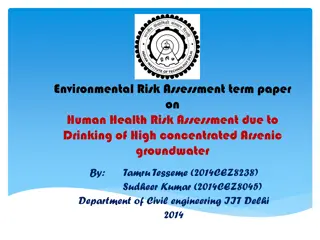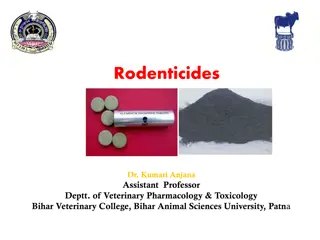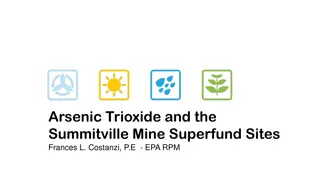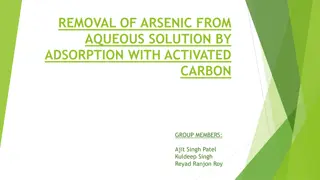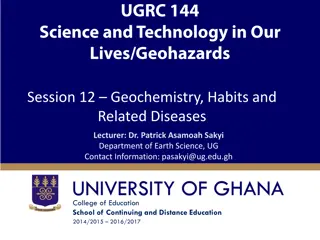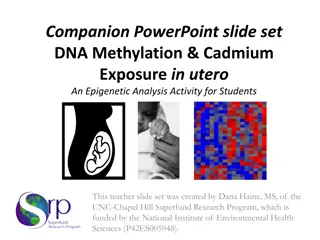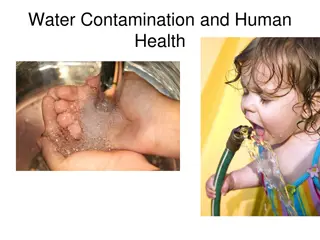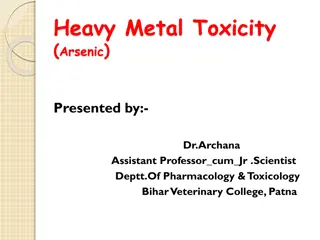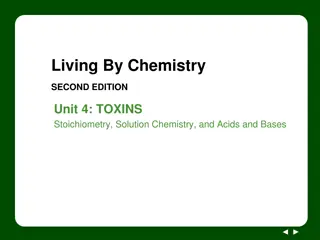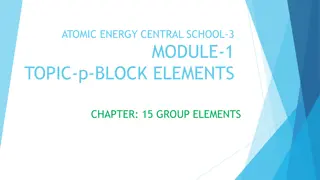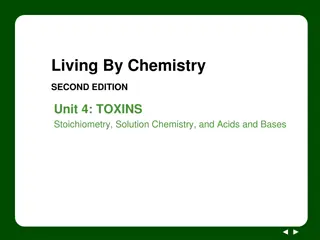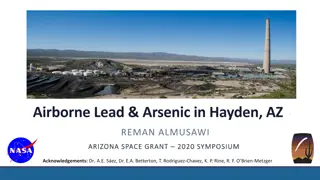Overview of Herbicides Classification and Groups
Herbicides are classified based on their chemical nature into inorganic and organic types. Inorganic herbicides, such as arsenic acid and copper sulfate, do not contain carbon atoms, while organic herbicides, like glyphosate and 2,4-D, contain carbon atoms. The classification includes various groups
4 views • 15 slides
Challenges in Education System of Bangladesh
Bangladesh faces significant challenges in its education system, with issues such as poverty affecting children's ability to access education. There is a shortage of educational institutions leading to overcrowded classrooms. The lack of funding hinders the establishment of more schools and colleges
0 views • 31 slides
Understanding Temperature Effects on Donor and Acceptor Ionization in Semiconductors
Temperature plays a crucial role in the ionization of donor and acceptor atoms in semiconductors. In N-type semiconductors, the Fermi level lies below the conduction band, while in P-type semiconductors it lies above the valence band, with the position depending on temperature and impurity atoms. Do
1 views • 13 slides
Human Health Risk Assessment due to High Concentrated Arsenic in Groundwater
This term paper focuses on assessing human health risks associated with elevated levels of arsenic in drinking groundwater. Various exposure routes and sources of arsenic contamination are investigated, leading to a comprehensive risk assessment. The results indicate non-carcinogenic effects and pot
0 views • 6 slides
Understanding Rodenticides: Types, Effects, and Treatment
Rodenticides are chemical preparations used for rodent control, primarily targeting mice and rats. They play a crucial role in managing rodent populations to prevent associated losses. The chapter covers an introduction to rodenticides, their classification into organic and inorganic types, mechanis
0 views • 19 slides
Environmental Impact Assessment of Frame Lake and Recommendations
The subbottom seismic profiling and stratigraphy studies reveal the sediment layers in Frame Lake and the impact of urban development on water quality. Glew coring analysis identifies layers of arsenic contamination. Recommendations include dredging to restore the lake's natural state pre-1975. The
0 views • 13 slides
Nonanthropogenic Arsenic Standards for the Yellowstone River
Establishing nonanthropogenic arsenic standards along the Yellowstone River to safeguard human health involves considerations of seasonal variations, regulatory statutes, and risk reduction strategies. Dr. Michael Suplee of the Montana Department of Environmental Quality presents data and reasoning
0 views • 18 slides
Alternative Energy Integration at Superfund Sites
Consider adding alternative energy components to Superfund sites to enhance sustainability. Two examples are the Arsenic Trioxide site in North Dakota and the Summitville Mine in Colorado. The Arsenic Trioxide site remedied a widespread arsenic contamination issue by expanding a water treatment syst
0 views • 10 slides
Arsenic Removal by Activated Carbon: Study & Findings
The research delves into the efficient removal of arsenic from water using various types of activated carbon. Findings indicate the impact of modification, pH, temperature, and co-ions on adsorption capacity and efficiency, showcasing superior results with iron-modified activated carbon and biomass-
0 views • 8 slides
Understanding Geochemistry and Its Impact on Human Health
This session, led by Dr. Patrick Asamoah Sakyi from the Department of Earth Science at UG, delves into the significance of geological elements in human health, discussing diseases arising from their deficiency or excess intake. Topics include geophagy, fluorine's impact on dental health, iodine defi
0 views • 48 slides
Understanding DNA Methylation and Cadmium Exposure in Utero: An Epigenetic Analysis
Explore the complex relationship between DNA methylation and in utero exposure to cadmium through a set of informative slides created by Dana Haine, MS. Learn about the impacts of DNA methylation on gene expression and how changes in methylation levels can lead to gene silencing or activation. Disco
0 views • 8 slides
Understanding Light Emitting Diodes (LEDs)
Light Emitting Diodes (LEDs) are semiconductor devices that convert electrical energy into visible or invisible light. They are constructed using gallium, phosphorus, and arsenic materials instead of silicon or germanium. The recombination process in forward bias condition is crucial for the operati
0 views • 19 slides
Exploring Paul's Visit to Sundarpur: Unit-8, Lesson-3
Discover the story of Paul's visit to the village of Sundarpur in Bangladesh through an engaging lesson filled with learning outcomes focused on reading, understanding dialogues, answering questions, and more. Immerse yourself in the cultural beauty and hospitality of Bangladeshi people as Paul inte
0 views • 24 slides
Water Contamination and Human Health: Causes, Types, and Examples
Water contamination poses a significant risk to human health, caused by various pollutants such as microorganisms, chemicals, industrial wastes, and sewage. Common sources include human and animal sewage, industrial emissions, pesticides, and agricultural runoff. Different types of contaminants incl
0 views • 25 slides
Understanding Arsenic Toxicity: Mechanisms, Effects, and Treatment
Arsenic toxicity is a significant concern due to its presence in various sources like pesticides and industrial activities. This heavy metal can lead to severe health issues by interfering with normal physiological functions. Chelating agents play a crucial role in managing arsenic poisoning by form
0 views • 13 slides
Understanding Toxicity: Mole-Mass Conversions in Chemistry
Explore the toxic nature of arsenic compounds and learn how to convert between moles and mass in this chemistry lesson. Understand the relationships between mass, moles, and the number of particles in a substance, and practice converting moles to mass and vice versa. Work in pairs to delve into the
0 views • 10 slides
Additional Public Health Considerations on Horne Smelter: Expert Analysis
The presentation addresses public health concerns post the publication of the Carcinogenic Risk Assessment in Rouyn-Noranda, focusing on arsenic, lead, and cadmium exposure risks with proposed reference values. It delves into non-carcinogenic effects, risk projections, and methodology used for evalu
1 views • 23 slides
Exploring Group 15 Elements: Properties and Trends
Dive into the characteristics of the group 15 elements: nitrogen, phosphorus, arsenic, antimony, bismuth, and moscovium. Discover their occurrence in nature, electronic configurations, atomic and physical properties trends, as well as chemical properties such as oxidation states and reactivity. Expl
0 views • 30 slides
Understanding Stoichiometry and Solution Chemistry in Toxins
Exploring how to determine the count of very small objects using mass measurements, especially in chemical compounds like arsenic oxide. The discussion includes calculating lethal doses, finding average mass, and utilizing percent error to express measurement accuracy in chemistry applications.
0 views • 12 slides
The Impact of Rooftop Gardening in Urban Areas
Rooftop gardening in urban areas offers numerous benefits such as energy efficiency, climate control, stormwater management, and economic advantages. Companies like Gotham Greens have pioneered commercial-scale greenhouse farming on rooftops, providing high-quality produce while reducing environment
0 views • 12 slides
Airborne Lead and Arsenic Contamination in Hayden, Arizona Study
Monitoring and analysis of airborne lead and arsenic contamination in Hayden, Arizona revealed significant levels of pollutants stemming from industrial activities. The study site at Hayden High School showed elevated lead deposition fluxes and surface dust contamination, posing potential health haz
0 views • 10 slides


